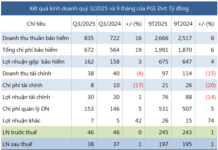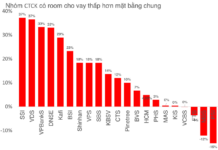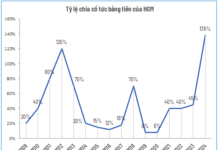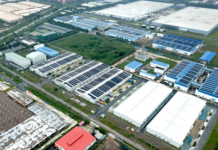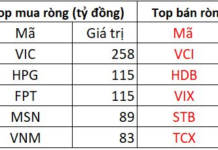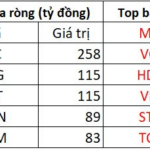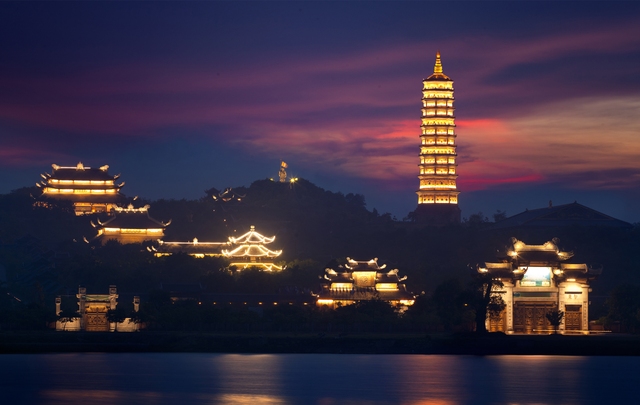
The ancient capital of Hoa Lu and the World Heritage Site of Trang An in Ninh Binh Province captivate visitors with their natural beauty and cultural significance.
Ninh Binh is strategically located at the crossroads of three distinct geographical regions: the Northwest, the Red River Delta, and North Central Coast. The province also sits between three economic hubs: Hanoi, the Northern coastal region, and the Central coastal region. With its central position in the northern half of Vietnam, Ninh Binh is well-connected to other provinces, including Thua Thien Hue.
In terms of geographical boundaries, Ninh Binh shares borders with Hanoi to the north, Nam Dinh to the east and northeast, separated by the Day River, Hoa Binh to the northwest, and Thanh Hoa and the Gulf of Tonkin (part of the South China Sea) to the south. With a coastline of 18 kilometers, Ninh Binh boasts the shortest coastline in Vietnam.
The province’s 2021-2030 development plan, with a vision towards 2050, aims to harness its full potential, leveraging its strengths, resources, and driving forces to achieve rapid and sustainable growth.
By 2030, Ninh Binh aspires to be a prominent province in the southern Red River Delta region, meeting the criteria for becoming a centrally-controlled municipality. It envisions itself as a millennium heritage city, a creative hub, and a top destination for tourism, cultural industries, and heritage-based economics in Vietnam and Southeast Asia. Additionally, Ninh Binh aims to be a leading center for modern automotive mechanical engineering and to foster a vibrant ecosystem for innovative startups.
Specific economic targets include achieving an average GRDP growth rate of 9.2% (based on 2010 constant prices) during the 2021-2030 period. The province also aims for a per capita GRDP of approximately 200 million VND and strives to be among the top ten provinces in the country in terms of per capita income.
Looking ahead to 2035, Ninh Binh envisions itself as a centrally-controlled municipality, renowned for its millennium heritage city status and creative offerings. It aims to establish itself as a prominent center for tourism, cultural industries, and heritage-based economics in Vietnam and the Asia-Pacific region. Additionally, Ninh Binh seeks to become a leading hub for modern transportation equipment manufacturing and a hotspot for innovative startups in the southern Red River Delta region.
Development Directions for Key Industries
For the industrial and construction sectors, Ninh Binh aims to transform the internal structure of the processing and manufacturing industry by promoting high-tech industries, high-value-added products, clean technologies, and export-oriented manufacturing. The province will offer attractive mechanisms and policies to encourage innovative startups in high-tech, environmentally friendly industries.
Priority will be given to the development of mechanical engineering and automobile assembly, electronics, new materials, and advanced technology materials industries. Industries that support agricultural production will also be fostered, along with a focus on maintaining stable production of traditional key industrial products while protecting the environment. Additionally, labor-intensive consumer goods industries will be developed in a rational manner.
The province will foster linkages among priority industries, laying the foundation for product and value chain connectivity, thereby enhancing the competitiveness of local businesses.
In the construction sector, the focus will be on adopting modern, specialized techniques and ensuring high competitiveness to meet the development needs of the locality and the country.
- Cultural-historical tourism, a unique offering that sets Ninh Binh apart.
- Nature-based tourism, showcasing the province’s stunning landscapes.
- Eco-tourism, wellness, and luxury resort-based tourism, taking advantage of the province’s diverse ecosystems, including beaches, forests, and hot mineral springs.
- Creative tourism, emphasizing innovative, intellectual offerings that conserve resources.
- Thematic tourism focusing on nature exploration, festivals, and cuisine.
- Interdisciplinary tourism, including MICE (meetings, incentives, conferences, and exhibitions), agricultural tourism, sports tourism, educational tourism, community-based tourism, and film location tourism.
- Inter-regional tourism, creating collaborative opportunities with other regions.











